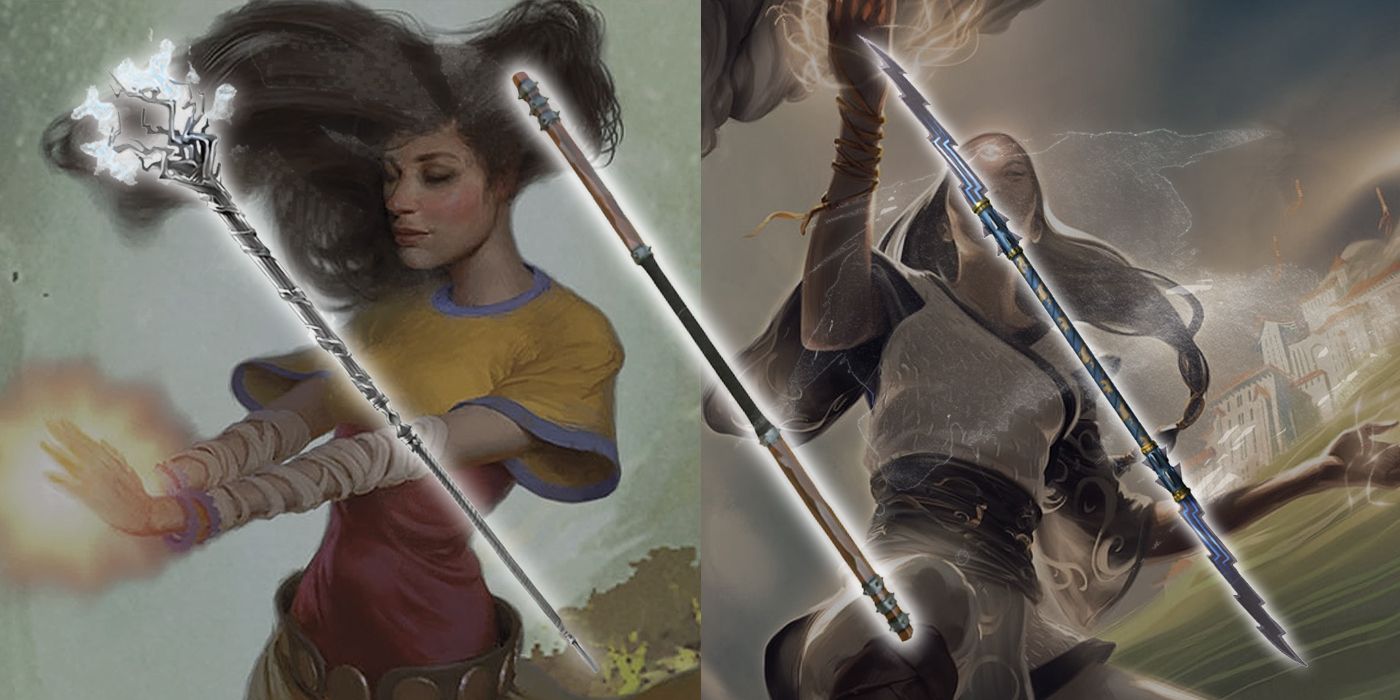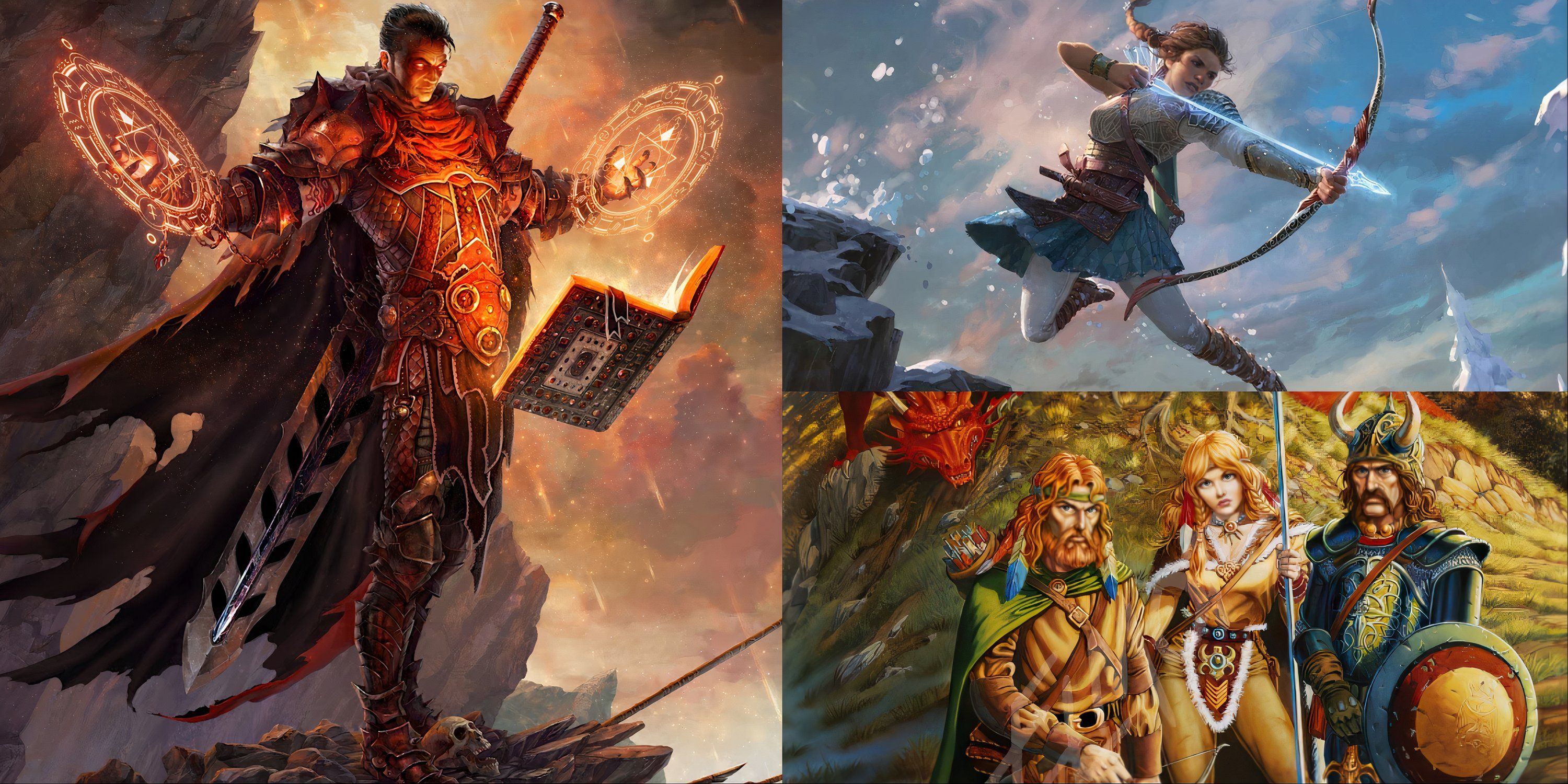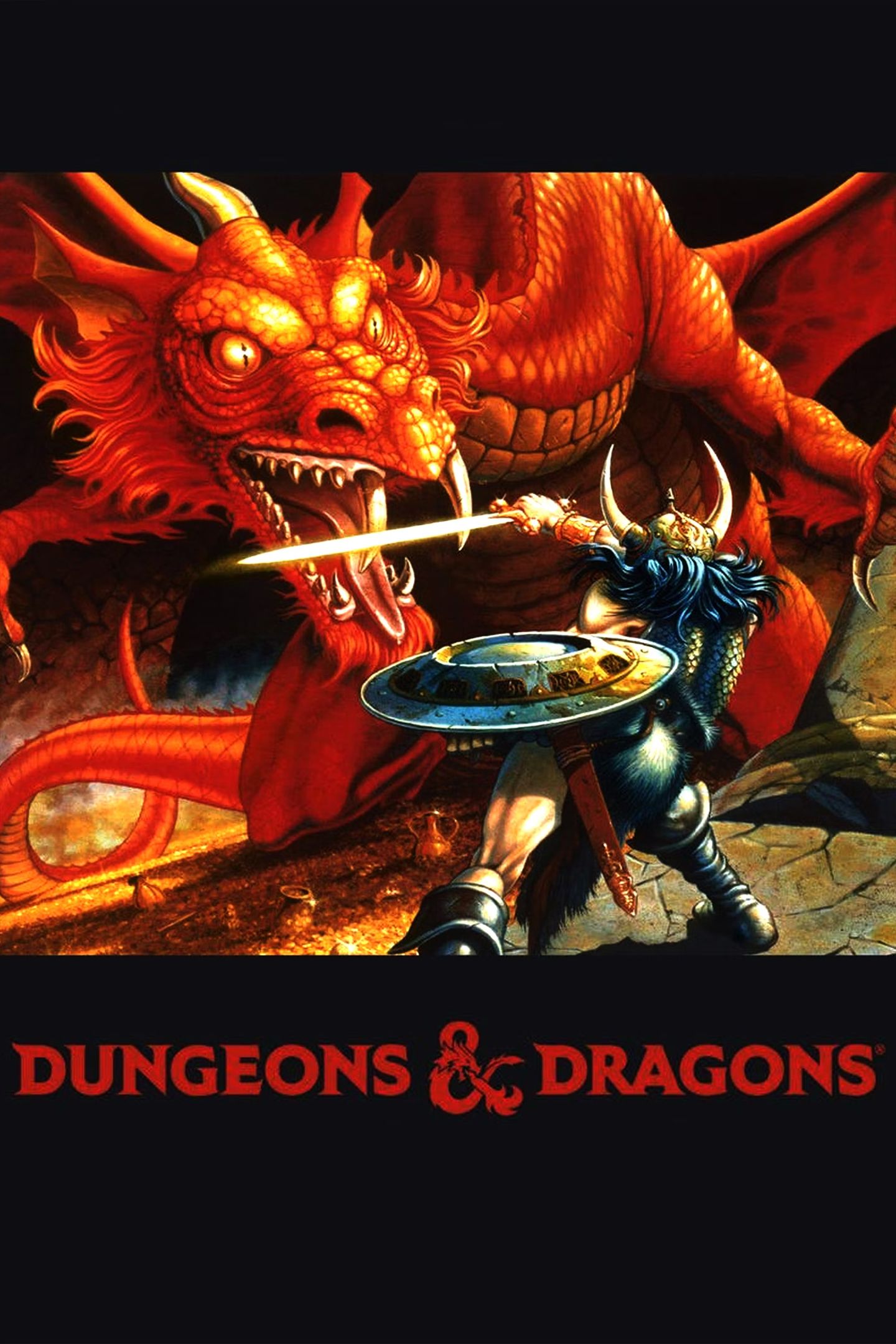Summary
- Overpowered Monks can combine deadly unarmed attacks with powerful spellcasting abilities.
- Monks excel when paired with specific weapons, enhancing their effectiveness in battle.
- Some Monks can take on the role of main healer in a party, providing support and dealing damage.
Although the Monk feels like a new class in the Dungeons & Dragons
universe, they’ve been in the game since the Blackmoor adventure supplement that dates from 1975. This class describes a martial artist who specializes in combat without weapons (for the most part), and they’ve been mostly a DPS and support class.
Unlike some other classes in the D&D fantasy universe, the legend of the martial arts also exists in real life. Plenty of overpowered Monks are based on famous people who mastered the same fighting style. Players who also want to build an overpowered Monk can make a few different choices for spellcasters, melee fighters, and healers.

Related
Dungeons & Dragons: The Best Weapons For Monks & Where They’re Often Found
Monks can really shift the tide in battle for any D&D party. Pairing them with these weapons makes them even more formidable in battle.
5
A Caster With Ki
Powerful Spells And Melee Attacks
This Monk combines deadly unarmed attacks with powerful spellcasting abilities.
Races
Monks value Dexterity overall, but Wisdom is also important for most skills. These are handy for spellcasting, especially when combined with certain Feats.
- Human: Increase all ability scores by +1.
- Variant Tiefling: Increase any ability score by +2 and another by +1. Gain Wings and a few offensive spells like Burning Hands.
- High Elf: +1 to Intelligence and a choice of one Wizard cantrip.
Monastic Tradition
Way of the Sun Soul gives the Monk several spells similar to those of a Light Domain Cleric. These Monks learn Radiant Sun Bolt at level 3 and Searing Strike at level 4, and can cast Searing Hands as a bonus action. For those who prefer a more sinister but equally deadly approach, Way of the Long Death has a similar spell list that includes powers like Touch of Death and Hour of Reaping.
Feats
- Magic Initiate: Choose two cantrips from either the Wizard or Cleric spell school, depending on what stat is better, Intelligence or Wisdom.
- Shadow Touched: Increase Intelligence or Wisdom by +1, learn the spell Invisibility, and choose another spell from the schools of either Illusion or Necromancy.
- Ritual Caster: This Feat requires 13 in either Wisdom or Intelligence. It allows the Monk to choose two first-level spells to learn from one of the spellcasting classes.

Related
Dungeons & Dragons: Overpowered Ranger Builds
Fans who want to take their Ranger build to the next level in Dungeons & Dragons should take a look at the following options.
4
The Monk With A Weapon
Simple But Deadly
Not all Monks go completely unarmed. Even simple martial weapons can be lethal in skilled hands, and this build proves it.
Races
Monks have limited weapon proficiencies, and some lineages have more options for weapons. Dexterity is the most important stat, and this build also includes improvements to Constitution and Strength for better weapon damage.
- Half-Orc: +1 to Constitution, +2 to Strength, proficiency in Intimidation. Players also get Relentless Endurance, which keeps the Monk’s hit points at 1 should they drop to zero.
- Dragonborn: +2 to Strength and +1 to Charisma, plus a breath weapon based on Strength or Constitution, depending on the type of Draconic Ancestry.
- Dwarf: +2 to Constitution, resistance to Poison, and Dwarven Combat training, which includes proficiency in battleaxes, handaxes, light hammers, and warhammers.
Monastic Tradition
Way of the Ascendant Dragon is just as impressive as it sounds when it comes to improved damage and extra movement. Draconic Disciple can be used to improve Charisma rolls, making it ideal for the party face as well, and Draconic Strike is about giving elemental damage to a melee attack. For those who prefer to keep this based on physical weapon damage, the Way of the Kensei specializes in weapon training. Players choose one melee weapon and one ranged weapon.
Feats
- Athlete: +5 to Initiave, can’t be surprised when conscious, and other animals can’t get Advantage on attacks by sneaking up on this Monk.
- Dual Wielder: The Monk can use shortswords, along with simple weapons. Depending on their weight, long-range equipment like a staff or spear can also be used with this Feat.
- Polearm Master: The Monk can only use simple weapons, which don’t include polearms, but this Feat includes spears and quarterstaves. This Feat gives them a Bonus Action to make a melee attack and gives them a wider range to strike Attacks of Opportunity.

Related
Dungeons & Dragons: Overpowered Fighter Builds
The Fighter class is a staple of Dungeons and Dragons, and here are a few of the most powerful builds that players can try out.
3
Hand Of Healing
The Party Savior
Previously a support class, Monks can take on the main healer role in the party and deal damage as they aid their companions.
Races
Some races have natural healing abilities, while others improve the Monk’s Constitution and Dexterity.
- Elf: +2 Dexterity, plus resistance against Charm and Sleep spells.
- Aasimar: Increase one ability score by +1 and another by +2. Gain abilities like Healing Hands and knowledge of the Light cantrip.
- Mark of Healing: Halfling: Found in the Eberron: Rising from the Last War module, this race gets a +1 to Wisdom and access to a variety of healing and support spells.
Monastic Tradition
The Way of Mercy is the obvious choice for this build, which grants the Monk a variety of healing abilities. Hands of Healing and its offensive counterpart, Hands of Harm, are measured using the Monk’s Ki die and their Wisdom modifier. This subclass also gives them proficiency in Medicine and Insight.
Feats
- Healer: Gain proficiency with a Healer’s Kit along with the ability to stabilize a dying creature. Once every long rest, the Monk can use an Action to heal a creature for its maximum number of hit dice.
- Magic Initiate: Cleric: Choose one cantrip and one first-level spell from the Cleric spellbook, using Wisdom as the casting modifier.
- War Caster: Important for healers, this gives them a better chance to cast spells successfully in combat without losing their concentration. Spells that require regents don’t have to be in their hands, and Monks can use a reaction to cast a spell instead of making an Opportunity Attack.

Related
33 Best Healing Spells In Dungeons & Dragons 5e, Ranked
For players looking to build dynamic, flexible D&D characters, healers are a great choice. Here are some of the best spells for them to learn.
2
The Quick And The Dead
A Rogue Monk With A Mission
Multiclass with the Rogue class and experiment with the power offered by Dexterity and powerful Stealth abilities. Players are advised to take three levels in Rogue and choose the Assassin Archetype to make the most of this multiclass build.
Races
Dexterity and Constitution are most important for this build, which also gives the Monk some extra weapon proficiencies.
- Mark of Detection: Half-Elf: Another unique species from Eberron: Rising from the Last War, this Half-Elf gets a +2 to Wisdom and +1 to any other ability score. They also have access to spells like Find Traps and Detect Magic.
- Wood Elf: +1 to Wisdom. Mask of the Wild gives this Monk the ability to hide when only lightly obscured.
- Glasya Tiefling: Available in Mordenkainen’s Tome of Foes, these Tieflings get +1 to Dexterity, and the spells Minor Illusion, Invisibility, and Disguise Self.
Monastic Tradition
Monks who follow the Way of Shadow could be compared to ninjas, using stealth and subterfuge to track and kill their targets, but equally deadly in open warfare. They use their Ki points to cast spells like Silence and Darkness, and gain Shadow Step at 6th level, a teleportation spell.
Feats
- Poisoner: This Monk’s attacks ignore poison resistance. They can use a bonus action to coat their weapon in poison and gain proficiency with a Poisoner’s Kit.
- Observant: Increase Wisdom by +1, gain the ability to read lips, and gain a +5 bonus to passive Wisdom and Intelligence rolls.
- Slasher: Increase Dexterity by +1, reduce the movement of any target hit with slashing damage, and any critical hit results in grievous wounds and gives the target Disadvantage.

Related
Dungeons & Dragons: 8 Characters That Could Appear in the TV Show, Ranked
From Strahd to Minsc, check out these D&D characters who could light up Netflix’s TV adaptation.
1
Drunken Master
Built On The Infamous Subclass
Inspired by an ancient legend and a popular movie, this is a powerful build based on real-life adventure that relies on devastating unarmed melee damage.
Races
This build spends a lot of time in melee range of enemies, so they need extra Constitution and the usual improvements to Dexterity and Wisdom.
- Githyanki: Increase one ability score by +2 and another by +1, or choose three to increase by +1. This Monk knows the Mage Hand cantrip, Jump, and Misty Step.
- Forest Gnome: +1 Dexterity and knowledge of the Minor Illusion cantrip.
- Kenku: From Volo’s Guide to Monsters, this race gets +2 Dexterity and +1 Wisdom. They are experts in Forgery, Mimicry, and are proficient in two extra skills.
Monastic Tradition
There actually is a Drunken Master subclass. It has the kind of skills the player can expect, like Drunken Technique, Drunkard’s Luck, and Tipsy Sway. It’s a tradition focused on quick, unpredictable movement.
Feats
- Durable: +1 Constitution. Rolls to regain hit points are double the player’s Constitution modifier.
- Resilient: Increase one ability by +1 and gain proficiency in rolls that use that ability as a modifier.
- Sentinel: Creatures this Monk hits with an Attack of Opportunity lose the rest of their movement for the rest of the turn, and enemy targets can’t Disengage. When an enemy attacks an ally, the Monk can intervene with their own attack as long as the original target doesn’t have this Feat.











Leave a Reply